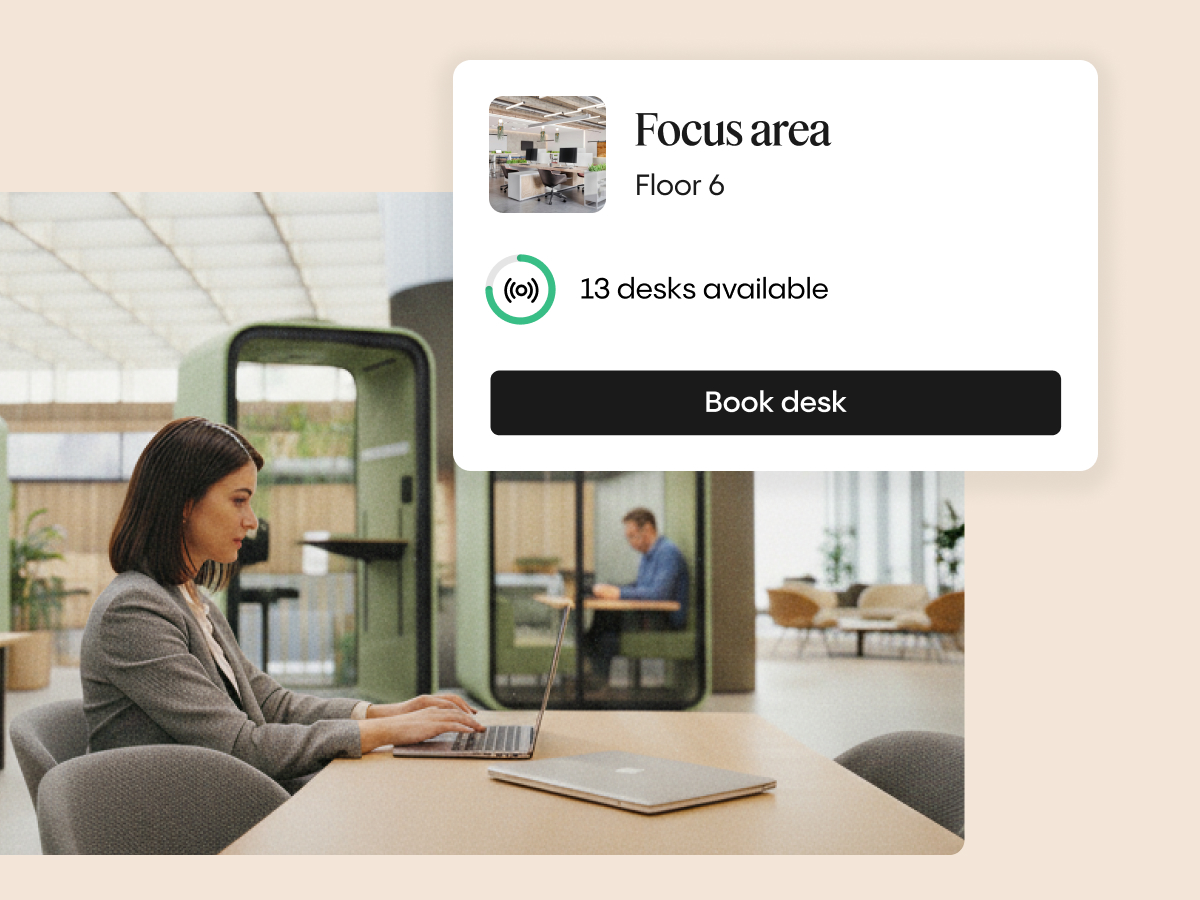
In this article we look at 6 ways data can be used to improve the reopening of your office. Something so many of us, employees and employers alike, look forward to: the return to the office. An event that is undoubtedly combined with challenges for facility managers, workplace consultants, and HR specialists. Many companies already defined a new office capacity to guarantee safe distancing among employees. So, what are the next steps you can take to ensure you use your office space as effectively as possible? Find out how data can help you get the most out of your office.
1. A safe office backed by data
The first phase of going back to the office is most likely influenced by the governmental regulations and restrictions around the pandemic. When the first employees are allowed back, the priority should be a safe working environment set up with an office capacity calculator. Having access to the office is essential to employee performance and well-being. For that reason, the task is at hand to make the limited office capacity accessible to everyone.
Luckily, when you are reading this, you probably have access to our analytics platform.
2. Eliminate the feeling of scarcity
When reopening your office, you have to make sure that employees feel welcomed back and confident that there is a place to work. At Mapiq, we learned that despite running at a limited office capacity, an office is hardly ever fully booked. Yet, employees often have a sense of scarcity when both access to the office is regulated and the number of visible and available desks is limited. This can make employees hesitant to come to the office altogether and when they do, they book a shift far in advance. Ironically, we learned that these shifts are more susceptible to no-shows.
3. Decrease no-shows
It may not be easy to quantify the sense of scarcity, but luckily there is an indicator as there is a lot to learn from how far in advance employees book their shift. As creatures of habit, we often book shifts 1 or 2 weeks ahead. You can see this in the graphic below. When there is no noticeable peak at either 0, 1, or 2 days in advance, it indicates that it is perceived that there are no free desks anymore close to the preferred office day. Combine this with the fact that shifts booked far in advance are also more prone to people not showing up, it is clear that we witness an issue we have to address.

You can limit the days in advance employees can book a shift, making it more likely that those shifts are actually used. Then you can focus on the perception of scarcity by making the bookable areas a bit larger. You could also combine the available desks of multiple rooms alongside each other into one bookable area or eliminate areas and open entire floors for booking a shift there. One floor with a capacity of 40 desks will feel much more spacious than 10 areas with 4 desks each. Your employees will feel confident there is a desk available whenever they need it.
Takeaway: When you reduce the days your employees book a shift in advance, you reduce the no-shows and stimulate going to the office when it actually matters. Second, you should make areas large enough to increase the perception of having plentiful desks available.
Pitfall: Individual desk assignment increases the feeling of urgency when booking a shift and prevents efficient use of office space.
4. Understand your office utilization
The next step is to make the most of your office space by optimizing the utilization of the available desks. Office Shifts Analytics has a great tool for that on the ‘Quota’ page.

The graphic shows the total bookable shifts, the use of those shifts, and the capacity of the smart office. Generally, it is good to have more shifts available than capacity in your office. Our experience shows that not all employees use the full quota available to them. To ensure the full utilization of your office space, we first need to identify who needs more shifts.
5. Adjust your quota profiles
If we look at the average booked shifts of the users per profile, we see in the graphic below that the users in the ‘Default’ profile use all available shifts to them. As this profile also houses most employees, we expect a better utilization of the office when we increase the quota here. Suppose you increase the quota to three shifts per week, you can expect those employees in the ‘Default’ profile to come to the office. It is important to check later if the new quota had an impact on the perceived scarcity of the shifts. Next, you have to make sure that the ‘Default’ profile cannot book too far in advance. This promotes efficient use of the office space and makes sure the other priority profiles can book a shift earlier.

Takeaway: Use data in combination with our suggested best practices when tweaking the quota profiles of your employees. A carefully designed quota profile greatly benefits the use of the office for all parties involved.
Pitfall: Make sure to periodically check the chart showing the days in advance a shift is booked. If there is a significant shift away from last-minute bookings, employees have a hard time finding a free desk. Avoid this and your no-show rate will also go down.
6. Reopen your office with data
Office Shifts Analytics is a great tool to help you regulate the flow of employees returning to the office. With the analytics dashboard, we give you the tools to set up the best possible office capacity for your company and adjust those to the needs of your employees. When changing an office access policy, be mindful of the waterbed effect, modifications at one place can lead to changes in other areas. Therefore, keep an eye on your Office Shifts Analytics regularly.


.jpg)
